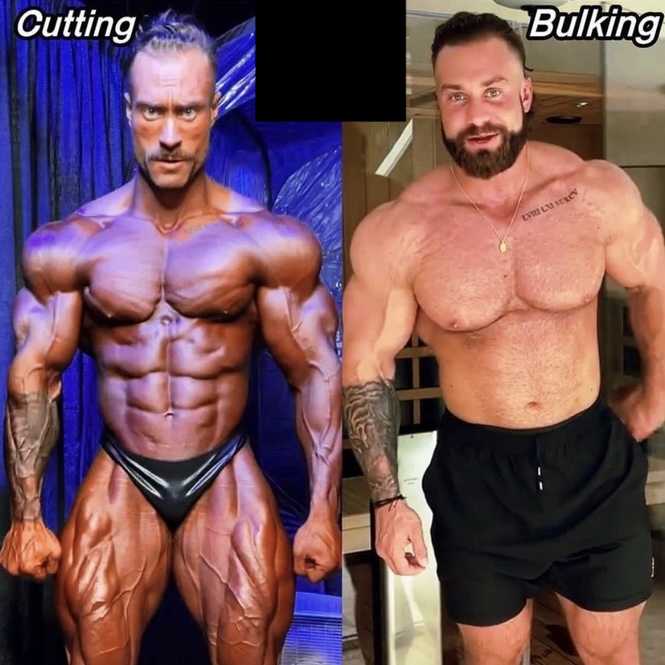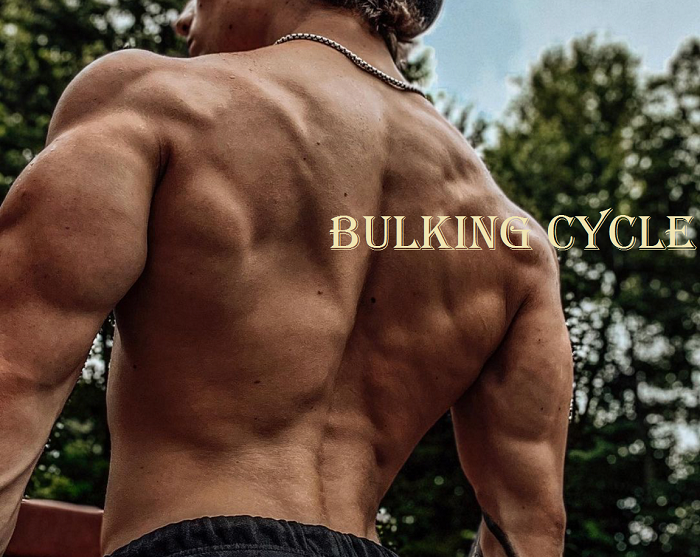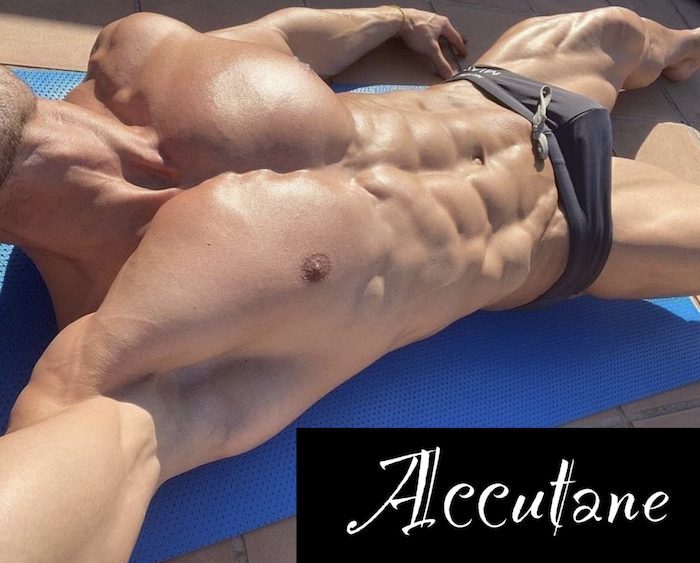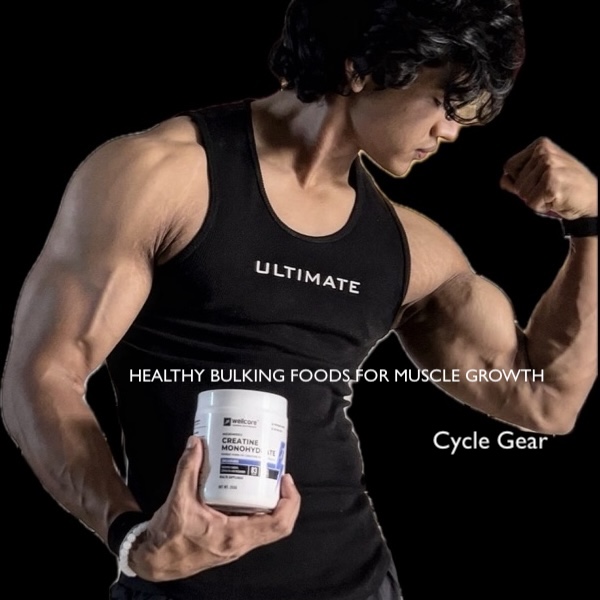Bulk vs Cut: Should You Bulk or Cut First?
Even if you’ve just started to work out, I’m pretty sure you’ve already heard about bulking and cutting. In bodybuilding circles, these terms are used very often. That’s why veteran lifters find it very easy to determine when to cut and when to bulk, and they definitely know whether they should bulk or cut.
Yet, if you’re a beginner to lifting, the question “Should I bulk or cut?” is extremely common.
In the end, to find out whether you should bulk or cut first, you need to take a few things into consideration. We’re going to explain what cutting and bulking means, and this way you will be able to easily answer this question for yourself. We would explain the pros for each goal and when you should start with each plan.
Bulking and cutting
You need to know what you’re aiming for in the first place. Moreover, it is of utmost importance to know how to achieve it too. When you’re just starting out, it could be a bit confusing, to understand when to cut, and if you need to cut at all.
- First off, you need to better understand whether you’re aiming to gain muscle or burn fat. While we all want to burn fat at the time we gain muscle, that is extremely hard to do and sometimes impossible.
Yet, if you’re a beginner, gaining muscle and burning fat concomitantly is much easier. Moreover, it is easier if you’re naturally gifted. Lastly, it is mostly possible as long as you run anabolic steroids. Natural guys who already carry a good amount of muscle mass and low body fat percentage find it almost impossible to do it. But even if you’re a beginner and using steroids, you are still going to find that burning fat and then gaining muscle, or the other way around, is far easier and far faster to achieve your goals than attempting both at the same time.
That’s why the question of whether you should bulk or cut first still stands.
Should I Bulk? (and when to)
If you’re new to the bodybuilding journey, I can assume that you’re not yet packed with muscle mass. When you want to gain muscle mass, that’s when the bulking cycle comes in. It doesn’t necessarily mean that you should start with bulking, but if you’re skinny, chances are high that you should.
That’s why, when starting out, bulking is extremely important to gain a lot of muscle and strength. As you may know by now, you do it via a combination of proper diet and correct training. So, you should start training, and start eating when you are skinny. Yet, there’s the other side of the coin. So, if your body fat percentage is over 15-20%, then you may need to cut first to see some progress.
You do not need cutting as long as you’re less than 10-15% of body fat, but you do not have enough muscle mass. Some people do aim for cutting even when they’re under 10% body fat, but they are packed with muscle. For those who lack muscle, a bulking cycle is their best friend.
Yet, regardless if you’re planning to cut excess fat for which you need a cutting cycle, or if you’re planning to bulk up by adding muscle mass, you need to work out. And you need to complete workouts with proper form! Regardless of the plan, your muscles are going to go through a “shock” at the introduction of an intense strength training program. Therefore, proper form is extremely important to see results.

What is “proper form”?
So, either you’re bulking or cutting first, you need strength training. And when strength training, proper form is extremely important. This is defined as a full range of motion, with slow, and controlled repetitions (reps) that are the feeling of really working your muscles. You should feel the momentum and feel the muscles burn, which means they are working. There should not be any swinging motions toward your body in order to lift. Nor should it feel too easy. That’s why you should find the proper weight for each specific exercise.
Then you should increase the intensity. That’s called progressive overload. You can do so by adding weight, reps, or sets or by reducing recovery times. Progressive overload helps you quickly move up in the lifting ability. For example, you’re starting light on the bench press with five sets of five reps. Then, you could add some weight (like five pounds) to the next workout. Or, keep the same weight, but go for a five set of 8-10 for example.
As the weight is heavier, you are going to build up strength to lift heavier. This helps you build strength that helps you lift 5×5 weights that you didn’t even thought you could at the beginning.
If you plan to add muscle and strength, then the answer to the question “Should I bulk?” is most likely yes. You just need to prepare to lift heavy and eat well. You need proper form and consistently adding weight and reps (progressive overload) for building both strength and increasing muscle mass.
Generally, when it comes to proper form, progressive overload, etc. that’s all highly individual. That’s why I strongly recommend “investing” in a personal trainer (a coach) that will be the best investment for your physique and performance enhancement purposes.
Dieting and Working Out
These two are extremely important for achieving physique and performance enhancement. Regardless if we’re talking about bulking or cutting. The problem is that both are extremely individual. That’s why a personal trainer is such a good idea to hire. They may help with both your diet and workout plan. There are a lot of things to mention. Anyway, I will try to share at least some basic knowledge.
For example, you need to pay attention to the form (correct exercise form) and to the amount of reps. Low reps and heavy weights are usually for strength increase. Moderate reps and moderate weights are usually the best for hypertrophy. High reps and low weights do have their place in hypertrophy, but they are usually for endurance boosts. Yet, when it comes to bulking, heavy compound lifts are essential, with low to moderate reps.
Try to incorporate various movements into your workout. Some of the most important ones are deadlifts, bent over rows, bench presses, back squats, and overhead presses. These are some key compound lifts when it comes to getting the most out of your bulking cycle plan.
But as said, besides working out, dieting is just as important (if not even more important) for muscle growth. That’s because dieting fuels your workout sessions and provides the recovery necessary to grow muscle. It is very important to realize that bulking up is not all about getting heavy in the gym. It is a combination of that with paying attention to what you eat. So, if you plan to bulk, you need to go heavy in the gym, and you need to consider a bulking diet. Usually, there are two bulking diets, but I would recommend just one. Let’s get over each one.
Dirty Bulk
Dirty bulking plan is a popular bulking plan simply because it is easy and convenient. But to achieve goals when it comes to bulking up and adding muscle mass, you shouldn’t search for comfort, because there’s definitely nothing comfortable about it! Yet, to a lot, the dirty bulk sounds like a dream come true. That’s simply because they can eat pretty much whatever they love. That’s why so many people go for it.
While it has its place as it allows you to eat a lot and everything you want to get bigger, it is not always a good idea. That’s simply because the dirty bulking plan is usually unhealthy and it usually also involves adding a lot of fat alongside muscle mass. So, with a dirty bulk plan, you’re working in a calorie surplus with high-sugar and high-fat foods. This greatly helps your recovery and fuels your heavy weight workouts. But it adds a lot of fat and it is simply not healthy. It is also harder to cut fat later. That’s why I recommend the second bulking plan.
Clean Bulk
A clean bulking plan also involves eating in a calorie surplus, but you still need to pay attention to the amount of calories that you need every day. Moreover, you also need to pay attention to the types of foods that you’re eating. A clean bulk is focusing on high quality foods, such as lean meat, fruits, vegetables, and whole foods. The clean bulking plan involves zero (or very little) processed foods, junk foods, processed meats, candies, cookies, and so on.
A clean bulk means that you are giving your body a calorie surplus that it needs to gain weight during a bulk. But you still count calories so the surplus won’t be too high. Moreover, the calories should come from quality foods, that’s why you should have a balanced diet with balanced macros. This way, you’re going to overall reduce the health risks and the potential for fat gain.
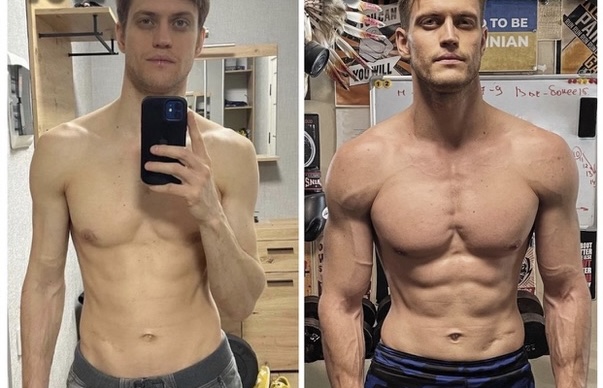
When To Cut?
If you’re wondering when to cut, but you’ve been reading so far, I guess you’ve already got an answer. Generally, knowing how bulking works when to bulk up will make it easier to understand when to cut, and how to run a cutting cycle. Thankfully, these two are not so hugely distinct. While there are obvious differences (both in workout regimens and dieting), you still need a proper workout plan and diet with both regimens.
Anyway, when it comes to “when should I cut?”, the answer could be one of the two situations:
- You’ve finished your bulking cycle. You gained muscle, but you may have gained some fat along the way. Some even gain a little too much fat. Regardless, since you’ve gained muscle, you may want to see further muscle definition at a lower body fat percentage.
- Or you may just start the lifting journey, and instead of starting with a bulking cycle to gain as much muscle and strength, you need to first lose a decent amount of fat. Usually, this applies to those who start their lifting experience with quite a lot of body fat percentage.
When you’re bulking, regardless if you’re a beginner or a veteran, it is not unusual to gain some fat. That’s because you need to have a daily surplus of calories anywhere between 200 to 1,000 calories. So, gaining fat is normal. If you go for a dirty bulking plan, you’ve definitely gained fat, usually more than you wish to.
So, how do you cut?
To cut, you’re still dieting, working out religiously, and still following a good macros balance. But you’re doing the opposite in terms of calories. During a bulk, you need to eat more calories every day than your maintenance daily intake. But to lose the excess fat, you are going to need to be in a calorie deficit.
Cutting after a bulk means that you should aim for about 0.5 to 1 pound per week! Well, this number can greatly increase if you’re using anabolic steroids. Moreover, this number can greatly increase if you’re just starting your fitness journey and you have a lot of fat to burn.
But in order to start eating in a deficit (or maybe surplus during bulking), you are first going to need to know your daily calorie needs. To do so, you can use an online calorie calculator. You are also likely to need to calculate your body fat percentage to determine the fat loss goals.
Moreover, while there could be slight adjustments in the macros, they are similar in bulking and cutting cycles. So you need to calculate proper macros, ensuring you have a balanced diet. You need enough fat, carbs, and protein to support muscle growth. That’s important regardless of whether you cut or bulk, otherwise, you may deprive your body of important nutrition that supports muscle growth and/or fat loss. That’s especially likely when you reduce calorie intake in cutting cycles.
Calories and Workouts
While there’s a huge difference in the calories that you consume during a bulking vs a cutting cycle (calories amount is the bigger difference between cutting and bulking), there are slight differences (if any) in terms of macros and workouts. They can be pretty much the same. You may just increase the protein intake and lower carbs during a cutting (and the opposite for bulking) a little bit. In terms of workouts – may add a bit more cardio for cutting and reduce some weight, while adding some more reps. But the most important thing is to keep going with a good form. Remember – you can lose fat and gain strength during a cutting cycle with a good combination of training and a healthy diet.
So, the thing that you should focus on most is your calories. For example, if you drop your calorie intake but you barely notice any weight loss, then you may need to revisit the amount of calories you eat. Or at least add some more cardio to your workouts. It applies the other way around too. In case you gain way too fast, or you’re adding too much fat – review the calorie intake. It is likely you need to decrease. It is not uncommon not to see any results during bulking, which usually means that you should increase the amount of calories you consume.
Should I Cut?
In the end, as you may have already realized, when to cut and when to bulk is all up to you. That’s mostly because we’re all starting weightlifting at different ability levels. And because we’re all having completely different goals. Some may want to continue to bulk sitting at 240 lb, and others may want to have muscle definition at 170 lb.
Yet, considering that muscle weighs more than fat if there were a set rule of when to cut, it may not apply to somebody who is weighing more because of their muscle mass. That’s why, knowing if it is time to cut is determined by personal preferences and by your body fat percentage.
If you have 10% or less body fat, regardless if you’re muscular or not, you are unlikely to need to cut, unless you’re very muscular, a veteran lifter, and you have a specific goal. Otherwise, in case you start with a high body fat percentage, that would be a good indication that you may need to cut first. If you have very little body fat percentage, it is a good indicator that you can start to bulk.
It is important to understand that during a bulking plan, you are likely to gain fat as you gain strength and muscle. You’re even more likely to gain it if you follow a dirty bulk. But since a dirty bulk can bring in both muscle gains and fat gains, as soon as you reach a certain level after a bulk, it may be the right time to cut.
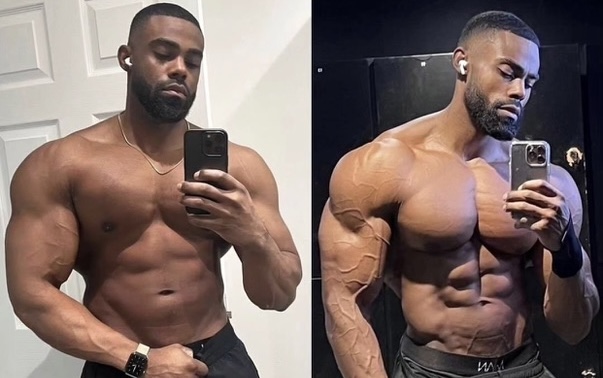
So, Should You Bulk Or Cut First?
Well, while the question “Should I bulk or cut first?” is pretty popular in gyms across the world, I really hope that this article helps you find the right answer for you. As you may have realized, the answer totally depends. So, the answer could be different from one person to another.
In case you’re starting at the heavier end of the scales with a higher body fat percentage, then chances are – you’re going to need to cut first. Also, even if you’re not a newbie to lifting weights, but you’ve just gone through a bulking cycle and you want to bring that muscle definition then it is time to get cutting too! Yet, if you’re a newbie without too high a body fat percentage, then bulking is most likely the right plan for you. Bulking is an awesome plan for those who want to gain muscle mass and strength, but do not carry a huge amount of body fat already.
In order to determine when to bulk and when to cut, I would recommend taking your current weight, calorie intake, and body fat percentage into account. These factors will greatly determine what you should be aiming for next. Anyway, either you need to cut or bulk first, you need to ensure you’re getting the right amount of calories, with the right macronutrient balance (and other crucial nutrients), and workout religiously with a good form.
Conclusion
So, depending on your current stats and your goals, you may need to cut or bulk first. Now you know the basics and I really hope it will be helpful. Here are some important points to remember:
- If you’re below 15-20% body fat you may need to bulk first (but cut if you’re above this number)
- Regardless of goals, ensure you are training with good form, with progressive overload
- Training is similar in bulking vs cutting with a few differences that are not essential
- Work out your macros in bulking and cutting. They are similar, but may reduce protein/increase carbs during bulking and the other way around during cutting
- Pay attention to what you’re eating and how much you’re eating (calories), regardless if you are cutting or bulking
- If you’re bulking, a dirty bulk approach can help, but it is likely to be unhealthy and add way too much fat
Need A Helping Hand?
Cycle-Gear.to is here for you. Whether you’re cutting or you’re bulking, we have the right compounds for you. They will help boost testosterone levels, and HGH levels, enhance protein synthesis, reduce recovery times, improve strength, endurance, and stamina, speed up muscle building process, including numerous other benefits.
You can get a lot of information, individual cycle plans for you and your needs, the best quality anabolic steroids for sale, fast shipping, the best customer support service and so much more. You can be sure you get the real and best quality steroids, for the cheapest prices on the market. We will help you determine how to use them right so they will be safer to use too. So, go for bulking steroids or cutting steroids and you’re on your way to achieving the physique and performance of your dreams!

